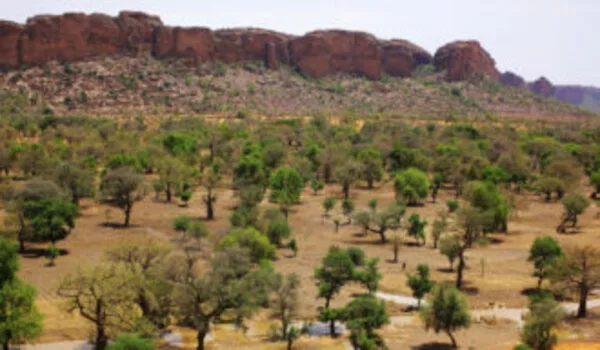Biological soil crusts (biocrusts) are dry but not sandy land areas. The top layer of soil, on the other hand, is home to a diverse community of nonvascular plants, microbes, and lichens. They harden together, preventing the soil from being blown into the atmosphere. According to the researchers, they are comparable to living skin, covering up to 12% of all land surfaces worldwide. They point out that, despite their importance in the atmospheric dust cycle, little is known about biocrusts.
The researchers wanted to learn more about the role of biocrusts and what might happen to them and the dust cycle as the planet continues to warm. To that end, they collected data from the limited amount of work conducted on biocrusts and combined it with global climate models.
Humans have a vast arsenal of weapons in their never-ending battle against dust, ranging from microfiber cloths to feather dusters to vacuum cleaners. However, new research indicates that none of these technologies can compete with nature’s secret weapon — biological soil crusts.
These biocrusts are thin, cohesive layers of soil that are glued together by soil-dwelling organisms and commonly carpet arid landscapes. Though seemingly insignificant, researchers now estimate that these rough soil skins prevent 700 teragrams (30,000 times the mass of the Statue of Liberty) of dust from wafting into the air each year, reducing global dust emissions by a whopping 60%. Unless steps are taken to preserve and restore biocrusts, which are threatened by climate change and shifts in land use, the future will be much dustier, ecologist Bettina Weber and colleagues report online in Nature Geoscience.
The researchers wanted to learn more about the role of biocrusts and what might happen to them and the dust cycle as the planet continues to warm. To that end, they collected data from the limited amount of work conducted on biocrusts and combined it with global climate models.
Dry-land ecosystems such as savannas, shrublands, and deserts may appear barren, but they provide an important natural service that is often overlooked, according to Weber of the Max Planck Institute for Chemistry in Mainz, Germany. These findings “really call for biocrust conservation.”
Biocrusts cover about 12% of the planet’s land surface and are most common in arid regions. They are built by communities of fungi, lichens, cyanobacteria, and other microorganisms that live in the top millimeters of soil and produce adhesive substances that clump soil particles together. Biocrusts play an important role in dry-land ecosystems by concentrating nutrients such as carbon and nitrogen and preventing soil erosion.
And, because dry lands produce the majority of the world’s dust, biocrusts play an important role in keeping dust bound to the ground. Fallen dust can carry nutrients that benefit plants, but it can also degrade water and air quality, hasten glacier melting, and reduce river flows. For example, in the Upper Colorado River Basin, researchers discovered that dust not only reduced snow’s ability to reflect sunlight, but it also shortened the duration of snow cover by weeks, reducing meltwater flows into the Colorado River by 5%. That’s more water than the city of Las Vegas receives in a year, according to Matthew Bowker, an ecologist at Northern Arizona University in Flagstaff who wasn’t involved in the new study.

Experiments had already shown that biocrusts improved soil erosion resistance, but Weber and her colleagues wanted to see how that effect played out on a global scale. So they gathered information from experimental studies that measured the wind speeds required to erode dust from various soil types and calculated how differences in biocrust coverage affected dust generation. They discovered that the wind speeds required to erode dust from soils completely shielded by biocrusts were on average 4.8 times higher than the wind speeds required to erode bare soils.
The researchers then incorporated their findings, as well as data on global biocrust coverage, into a global climate simulation, allowing them to estimate how much dust the world’s biocrusts trap each year.
“No one has really attempted to make that calculation globally before,” Bowker says. “Even if their number is off, it demonstrates that the true number is most likely significant.”
Using future climate projections and data on the conditions biocrusts can tolerate, Weber and her colleagues calculated that by 2070, climate change and land-use changes could result in biocrust losses of 25 to 40%, increasing global dust emissions by 5 to 15%.
Bowker believes that preserving and restoring biocrusts will be critical in the future to reducing soil erosion and dust production. He hopes that the findings will spark more debate about the effects of land-use changes on biocrust health. “We need to have those discussions.”





